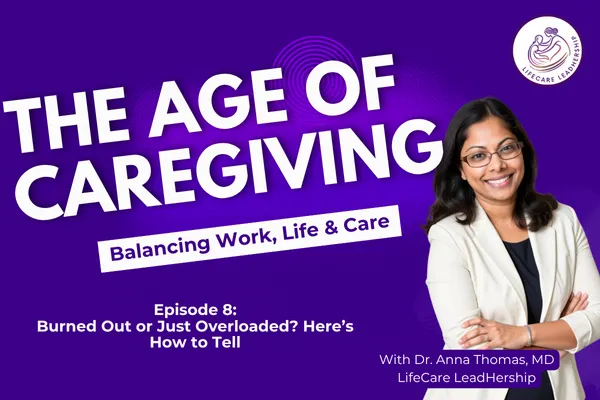
Burned Out or Just Overloaded? Here’s How to Tell
The Lie We Keep Repeating
“I’m just tired.”
“It’s been a long week.”
“I’ll rest once this season slows down…”
But what if that “season” hasn’t slowed down in months?
If you're juggling caregiving, work, home responsibilities, and trying to hold yourself together, you may have wondered:
“Am I just overwhelmed… or am I actually burned out?”
That’s the question we’re exploring today.
Because while overload is common and recoverable, burnout is something deeper—and if you miss the signs, you may miss your chance to recover.
Overload vs. Burnout: What’s the Difference?
Let’s break it down simply.
Overload feels like:
Too many things to do, not enough time
You’re stretched thin—but still functioning
You're thinking, “If I can just make it through today…”
Burnout feels like:
Emotional numbness or flatness
Dread—even about the small stuff
Brain fog and forgetfulness
Exhaustion that lingers, even after sleep
Disconnection from people or purpose
Harsh inner dialogue like:
“Why bother?”
“Nothing I do makes a difference.”
The difference isn’t just intensity. It’s depth.
Overload is like sprinting with a heavy bag—you can pause, breathe, and recover.
Burnout is like carrying that same bag day and night until your whole system starts to shut down.
3 Questions to Help You Know
So how do you know where you are on the spectrum?
1. Is rest helping?
If you take a break—a night off, a day off—do you bounce back?
Yes? You’re likely just overloaded.
No? That may be burnout.
2. Am I emotionally present?
Are you still engaged with your work, your family, your goals?
Overload lets you stay connected.
Burnout makes everything feel far away.
3. What does my inner voice sound like?
Burnout speaks in absolutes:
“No one helps.”
“I’m failing.”
“It’s all on me.”
If your self-talk sounds more like blame than encouragement, that’s your burnout alarm going off.
What to Do When You’re Burned Out
Burnout isn’t something you power through. It’s something you need to pause, repair, and reframe.
Here’s where to start:
1. Stop Pushing. Start Pausing.
More effort won’t help—it will hurt.
You don’t need to collapse. You need to reflect with intention.
Ask yourself:
What’s draining me the most right now?
What support do I need but haven’t asked for?
What am I doing out of guilt, not necessity?
Clarity begins with honesty.
2. Repair Your Rhythm
This isn’t about spa days. It’s about small daily rituals that protect your energy.
Try:
A 10-minute morning check-in—focused on how you feel, not just your to-do list
A boundary like: “No emails before breakfast”
A simple nightly routine that signals to your brain: You’re done. You’re safe.
Tiny rhythms lead to long-term recovery.
3. Reframe Your Role
This is a cornerstone of my Thrive & Lead program and the Confident Caregiver Framework I teach.
You’re not here to fix everything.
You’re here to lead—with your energy, your decisions, your caregiving, and your boundaries.
That’s not selfish.
That’s sustainable.
Your Next Step Matters
Burnout is not a flaw. It’s a signal.
And that signal is asking you to make a shift—before you shut down.
If you’re ready to take a step toward clarity and renewal:
✅ Join the Free Workshop – From Caregiver to Care Leader
Learn how to lead with clarity, build structure, and protect your energy—even during hard seasons.✅ Explore the Thrive & Lead Program
This coaching program helps you go from chaos to calm with systems that work for real life.✅ Read Ready to Care
A must-read for anyone early in their caregiving journey.
More resources are available at LifeCareLeadHership.com.
Explore More from The Age of Caregiving™
🎧 Listen on Buzzsprout: lifecareleadhership.com/podcast
📺 Watch on YouTube: youtube.com/@ageofcaregiving
📝 Read more on our Blog: lifecareleadhership.com/ageofcaregiving
Final Word
You don’t have to quit.
You just have to reset.
And you don’t have to do it alone.
Overload is loud.
Burnout is quiet.
But both are your body’s way of asking for care.
You’ve got this.
And I’ve got you.
The views and opinions expressed in this post are solely my own and do not reflect the views of any past or present employer of Dr. Thomas. This content is for educational and informational purposes only and is not intended as medical or legal advice.
